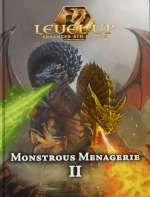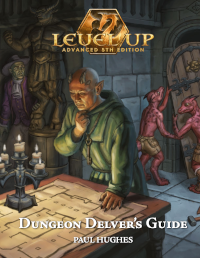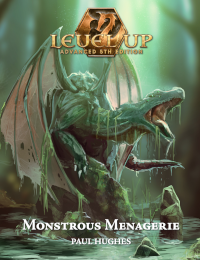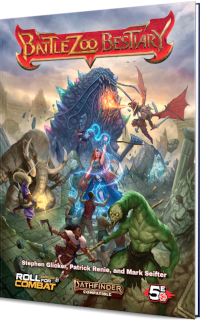Guest Post by Rory!
The D&D 2024 Player’s Handbook is out, and now everyone gets an Origin Feat at level 1 (plus a bonus feat if you go Human!). There are a lot of them and they vary wildly in power level, so here are my current rankings:
EDITS: I’m shifting around my valuations of Alert (to A-Tier), Lucky (to B-Tier), Musician (to S-Tier), and Tavern Brawler (to C-Tier) due to some early feedback. I will probably continue to modify this list based on feedback and my own experience during play.
- S-Tier: Top of the line option, arguably “must take” ability.
- Musician (Edit to boost to S-Tier): I originally rated this a lower because it’s probably not a feat everyone needs to take, but Heroic Inspiration got such a boost in this edition (turning from Advantage into a reroll) that this belongs in S-Tier. This is the kind of feat that at least one member of the party really needs to take, and at low to mid-levels (or large parties), you wouldn’t go wrong having two people with this feat. Arguably, if you have mostly Humans and/or your DM is really free giving out Heroic Inspiration, this goes down in value, but in my experience almost no DM regularly remembers to give out Inspiration, and players usually forget to remind them so this is quite strong. And hey, you get some instrument proficiencies too.
- Tough: This feat is so boring and so good it legitimately makes me upset; it’s the closest thing to a “forced choice” on the list, and a strong draw to playing a Human. It’s just really hard to say no to such a huge boost of hit points. Even a beefy Barbarian with 16 Constitution sees a 20% boost to hit points every time they level, never mind a Wizard with a 14 Con who sees a massive 33% boost to overall survivability. I mean, this is a feat most builds eventually took at higher levels before you could get it for free at 1st level. It’s honestly a little dumb that it’s an option, and I won’t fault folks who take something more interesting. I got some pushback from folks saying they think this is overrated, but I have trouble agreeing. Hit Points are just so foundational to the game, and this is such a significant boost to survivability AND it is so useful for literally every character, I have trouble rating this any lower. This is the kind of feat that keeps low HP characters alive AND that has excellent synergy with defensive abilities such as Barbarian Rage and Heavy Armor Mastery that reduce damage and wring out extra value out of each point of HP.
- A-Tier: Excellent option, worth strong consideration.
- Alert (Edit to boost to A-Tier): This is a very strong feat, and it’s nice the Initiative bonus scales with level. The ability to swap is a nice bonus that allows much needed coordination that has been lacking with the removal of the delay option in 5e. It’s just a fact that so many combats are decided by who goes first as the ability to lock down enemies, move to a safe distance, or just plain eliminate opponents before they can act is massive, not to mention class specific perks like the Assassin’s Surprising Strikes. And in an environment where the majority of combats are decided in about 3 rounds of combat, going early can literally be a 33% boost to overall effectiveness. This is always going to be a decent option, either giving you a fighting chance or helping ensure you act early in every round. I got some feedback that many consider this S-Tier. I am not sure I agree considering how high variance Initiative rolls can be, but the boost combined with the option to swap Initiative to position a timely Fireball or let the Assassin sneak in a Surprising Strike makes this really attractive.
- Magic Initiate (Edit to list extra options suggested by Reddit): There are a lot of possibilities with this feat, and getting it for “free” opens up a lot of attractive build options. The most obvious choice for your level 1 spell is just grab Find Familiar. You can cast it as a ritual so you can neatly bypass the once per long rest limitation, and you can do the usual cheese of giving yourself or an ally Advantage on an attack roll each round in combat (until the DM murders it anyway, in which case you can recast when you have an hour to kill). Plus, you can use it for scouting and fetching far away objects. Other strong options include Shield, Shield of Faith, Healing Word, Goodberry, or Charm Person. For Cantrips, I had it pointed out to me that Shillelagh opens up the ability to use Intelligence, Wisdom, or Charisma for your attack rolls, which can unlock all sorts of fun gish builds or just leaning into using non-standard attributes in melee. Otherwise, if you go Wizard I would tend to prioritize Minor Illusion and Mage Hand for utility and fun times. And for Cleric or Druid make sure to pick up Guidance for that sweet bonus to skill checks, especially if no one else has taken it.
- B-Tier: Solid option.
- Lucky (Edit to bring down to B-Tier): This version of Lucky is massively nerfed compared to the original Lucky Feat, but the original Lucky Feat was arguably pretty broken, so that’s not saying much. Dice manipulation goes a long way even if you have to do it ahead of the roll. Securing advantage on a key attack roll (such as a spell attack with a high level spell) or a crucial skill check is still really valuable. And of course you’ll remember when you use this to keep your PC alive when they are being attacked and low on health. This is an option that probably feels pretty strong by level 5 when you can use it 3 times, and you’ll be spending it like candy at higher levels.
- C-Tier: Some utility but mediocre compared to other options or very niche/campaign specific.
- Crafter: This is a cute feat, and I could imagine someone having fun with fast crafting even if it’s actual utility is somewhat limited in most campaigns. The 20% discount to non-magical items definitely catches the eye. The most obvious use case is saving 300 gold on a set of Full Plate, which could be handy at lower levels, especially if two or more PCs need a set. Now, this would be really powerful if Vehicles or Structures counted as an item, but considering the definition of “Object” in the DMG, I am thinking it does not apply, which limits its value at higher levels. Now, there may be certain “nation building” campaigns where going into the logistics of, say, outfitting an army with weapons, armor, food, gear, etc. is a big focus on the campaign; if you’re trying to squeeze value out of every gold piece, then a 20% discount on all mundane gear might go a long way, but I don’t expect that to be a very common campaign theme.
- Healer: This feels like it should be a feat for parties light on healing, though rerolling 1s does have some utility for characters looking to maximize their healing powers (note, the benefits are fairly minor, representing less than 0.5 HP per die of healing). In combat, however, this is pretty clunky, requiring a normal action to use for fairly modest healing, really only useful for bringing someone back from unconsciousness (which sure, you’ll do in a pinch, but you aren’t exactly excited about it). Out of combat, it still expends hit dice, which really only makes it useful when you don’t have time to do a short rest between combats. Don’t get me wrong, extra healing is always appreciated, but as an option this feels a little underpowered. Now, there is one obvious use case I can think of here that might push this up in power; a Rogue with the Thief subclass can take Utilize as a Bonus Action, which makes this pretty attractive for some classic whack a mole style healing in combat. With the limit being literally a target’s hit dice, that’s a lot of unconscious teammates potentially brought back into action.
- Tavern Brawler (Edit to boost to C-Tier): Thematically, this is a fun feat, and I guess I won’t fault someone who just loves the ideas of getting into bar fights, but none of the benefits are all that impactful. Annoyingly, this might be best for a Monk to pick up for a small increase to damage and the ability to push 5 feet a turn, which has some situational positional uses and frees you up to move away from enemies without using disengage. The Bard College of Dance might also pick this up for kicks (since they get an unarmed strike whenever they use Bardic Inspiration), and I might be missing one or two other uses. But again unless your DM likes positioning all their enemies right at the edge of high cliffs, there are probably better options.
- D-Tier: Overall weak and a bit of a trap compared to other options.
- Savage Attacker: So the best case scenario here is using it with a Greataxe or other 1d12 weapon, which equates to just under a 2 point damage bonus. At lower levels, when a fighter might be doing 10 damage on average, a 20% boost is pretty attractive, and I’d definitely rate this way higher for one shots or campaigns unlikely to hit 5th level. At higher levels as you do more damage on average and make multiple attacks, the utility goes down since you can only use this once per turn. By 5th level, a Fighter with Great Weapon Master is doing at least 2 Attacks a round (potentially more with Hew and Cleave) for an average of 14 damage per hit (potentially higher with a magic weapon or other buffs) before applying this feat and likely has multiple ways to secure Advantage on attack rolls, which makes Savage Attacker a lot less attractive. It’s really night and day compared to other static damage bonuses that scale with multiple attacks and ability score increases, such as Fighting Style: Dueling and Two-Weapon Fighting (now much improved due to the somewhat confusing Nick + Dual Wielder ruling), which always feels strong even at high levels.
- Skilled: Skill and Tool proficiencies are the kind of thing where the first four or so (which everyone gets access to) are really useful towards building to your strengths, and pretty soon you are filling in gaps that will likely be tackled by other characters anyway. And there are other ways of snagging an extra Skill or Tool proficiency or two through subclass and species selection that you don’t really need to resort to burning an Origin Feat for this. In short, there are much better and more impactful options.








Do you think Healer should be a Bonus Action?
Also, I feel like the Prodigy feat should have full-time replaced Skilled. It’s much more fun.
Yeah, I would have liked to see Prodigy replace Skilled for sure, that feels about right compared to the other options. It’s presented as a general feat called Skill Expert with an ASI attached, which is fine, but it just means kind of a wasted Origin Feat in my opinion.
Healer as is but as a bonus action is perhaps too strong, maybe if it was usable proficiency bonus times per long rest that would be appropriate? It occurs to me the Thief subclass can take the Utilize action as a bonus action so maybe a real use-case for that feat.
Problem I have with all this stuff is that you have to buy the books.
See, WotC makes all their money off of selling books. If they only had three books, and everyone who wanted those three books had bought them, they’d not sell any more books.
So they have to keep putting out new and different books.
But worse, each ‘new and different’ book has to contain some ‘better power’, else word would get around really fast that it’s not a book to buy – doesn’t contain any powerful new details – and so sales tank again.
So every new book has to contain some ‘new and better power’ that your player only gets if they buy that book – every new book – over and over again.
‘Adventurer’s League’ tried to deal with this by making a rule of ‘Player’s Handbook + 1 [other book, not including any other books]’ but it proved completely unenforceable.
So now, I’m afraid, it’s like micropayments in online games. Those who wish to spend fortunes on their characters (by buying more books) will be far more powerful than those just in it for fun.
Yeah, I’m a touch grumpy about this. WotC has a business, and they’re trying to make (more) money. Hard to fault them for that, whatever it does to the game.
Tavern brawler is FANTASTIC. A tier at a MINIMUM for the improvised weapon proficiency ALONE. It’s a good option for basically any character who uses melee weapons (unless you very specifically use a single one-handed weapon that does not benefit from the polearm master feat), thrown or otherwise. You can just read the TLDRs at the end of each section, the rest is just justification and explanation.
1. Damage reliability
The improvised weapon rules say that if you use a simple or martial weapon in a way contrary to its design, it becomes an improvised weapon, and the DM can assign a different damage type to it based on how you’re using it, though its damage die is reduced to a D4. Let’s say you rust the back end of your Greatsword, letting it deal poison damage, and you’re level 5, giving you a +3 proficiency bonus with extra attack, and you have Great Weapon Master. (Note: this is about the minimum benefit you’re going to get from tavern brawler; it only gets better as you level.) If you fight a normal creature, you deal( 2d6 + 4 + 3) damage, which comes out to an average of 14. With extra attack, that’s 24. With a 65% chance to hit, that’s 15.6. Not too shabby for a character whose only features are an ASI and extra attack! Half that, though, is only 7.8, which is completely awful. Resistance to BPS damage destroys your damage output. But we have tavern brawler, so let’s use the rusted end. This isn’t resisted, but the damage die is a d4 now. (1d4 + 4 + 3), which comes out to 9.5 Double that with extra attack, 19. 65% to hit, 12.35.
TLDR;
7.8 vs 12.35.
We multiplied our damage by 1.5 times against a creature with BPS resistance at level FIVE using only our origin feat, and it’ll only get better as our ability scores increase and our GWM damage scales with our proficiency bonus. That’s not it, though!
2. Cunning strike at home
The improvised weapon rules let you treat a weapon as an improvised version of another weapon. This is possible through a combination of the “contrary to its design” rule and the “looks like another weapon” rule. This might not seem very useful, but it really is, especially for characters that get to make an extra weapon attack but only with a certain kind of weapon.
I think the absolute most obvious and clearly beneficial example of this is with the Polearm master feat, so let’s start with that. Polearm master lets you make an additional d4 bonus action attack when you attack with a quarterstaff, spear, or any weapon with the heavy and reach properties. This is pretty good; an extra ability score + d4 damage with a bonus action, alongside an application of weapon mastery, is decently strong.
But there are some weapon masteries that don’t stack with themselves. Topple, Cleave, and Sap are useless to apply twice, and all of them apply to polearm master weapons. Consistently wasting a powerful feature isn’t really something you want to be doing.
But, improvised weapons let you use the weapon masteries and properties of other weapons with polearm master weapons! Let’s say you’re attacking with a Lance and you’ve already knocked it down. You can use your bonus action to attack with the other end of the weapon, which has a sword duct-taped (or carved in)to it. Obviously, this goes against the intent of the weapon, but that doesn’t matter. You have tavern brawler. The damage die is still a d4 (it’s still an improvised weapon), but you get the cleave mastery, letting you make ANOTHER attack with the weapon against a target within 5 feet of the target and within 10 feet of you. Nothing saying you can’t use the front end of the weapon for this attack, is there? You can apply the topple mastery AGAIN to this second, upright target, using your d10 weapon and potentially knocking them prone. (Unfortunately, you don’t get great weapon master with this attack, since it’s still part of your bonus action.)
TLDR;
You just turned the polearm master d4 attack with no weapon mastery attached (because it’s already knocked prone) into a d4 attack with the cleave weapon mastery AND THEREFORE ANOTHER d10 attack with the topple weapon mastery. Absolutely absurd.
You can do a similar thing with a greataxe by making it into a lance/pike for the second attack, giving you an extra 5 foot of reach with it and potentially knocking them prone/knocking them back. Graze from the glaive boosts damage reliability and at slightly-higher-than-mean armor classes boosts damage.
(I call this cunning strike at home because it reduces your damage (for d6+ weapons) but adds powerful secondary effects, kind of like cunning strike.)
3. Non-true strike rogues
But let’s talk about something we haven’t brought up yet; light weapon users. These might be the best users of tavern brawler, because their damage die is a d6 at a MAXIMUM, meaning turning them into improvised weapons reduces their damage per attack by like, .65, AKA a rounding error.
A rouge benefits a lot from two-weapon fighting (extra sneak attack reliability), but also really likes their bonus action free. This was a very hard dilemma up until the 2024 rules introduced the nick weapon mastery; now you can do both. But that prevents you from using the vex weapon mastery on both attacks, which rouges also benefit a lot from (extra advantage). What’s more, vex weapons can only be used in melee, so you can’t use thrown daggers with it!
Luckily, the tavern brawler feat fixes both of these problems. You can throw a shortsword 20 feet as long as you’re willing to accept the damage die of a dagger (which, if you were using a dagger before, you clearly are). Then, use the nick weapon property to throw a dagger, but throw it the way you’d strike with a shortsword, not the way you’d throw a dagger. Since there’s no rule about when you determine when you’re using an improvised weapon (assumedly before you roll damage but not necessarily before you attack), you can then swap it to a shortsword, applying the vex mastery AGAIN.
TLDR;
You just got two extra, powerful weapon masteries (vex twice) when before you only had one (only one dagger’s nick matters) at 20 foot of range. There’s other stuff you could do with nick, like replacing it with slow using a whip, but this is the most powerful.
4. Out of range? No problem! (this is short, no TLDR).
Let’s face it; if you’re playing a melee martial, you’re going to be more than 5 feet away from all the enemies at the end of your movement sometimes. But that’s far less of a problem with tavern brawler!
Normally in this situation, you’d throw a javelin. But if you have, like, the great weapon master feat, it’s waayyyy worse than whatever heavy weapon you were using. But, again, you can throw any weapon using tavern brawler, including a greatsword!
That works out to 1 less damage for the damage die, but however much you get from great weapon master extra damage to make it up, as well as the more damaging graze mastery.
This isn’t that crazy, it’s probably the most vanilla benefit you get from the feat, but it is still a good one that shouldn’t be overlooked.
5. Monks with weapon mastery (short, no TLDR)
Yknow, Rory? You were right when you said that monks were the best at using tavern brawler. But you barely scratched the surface.
Monks are the absolute KINGS of improvised weapons.
Why?
Improvised weapons are a general rule.
Martial arts is specific.
The only downside to non-javelin melee weapons is removed; the d4 damage die.
You can attack out of range, with reliable damage, with any weapon mastery, with cunning strike at home, with no detriments (except for maaaaaybe cunning strike at home). It’s an utter free for all. There are basically no limits to what random constituent parts of monk weapons you can throw together.
TLDR for the whole thing:
MOVE TAVERN BRAWLER TO A TIER AT LEAST
Oh sorry, I might’ve accidentally posted the same comment twice with slightly different names.
And I really do not mean any insult to you. Thank you for your insights on the origin feats. I just think your evaluation of tavern brawler missed a lot.
nope.
Tavern brawler is a definitive C tier, even on monk I wouldnt take it. Far better choices. Alert, thought, magic initiate wiz, musician, fits perfectly well.
Rerolling one is ok probably the strongest feature but you can still reroll a one. Push is ok but not really a game changing thing.
Improvised weapon profiency means +hit rate. Nothing More. Every stuff mentionned by erdgerd either dont follow the rules or stretch it to the point its yo, there are rules for balances. You can do this stuff without improvised weapon profiency, but it will not do AS much as you seems to imagine.
I think skilled is worth a C tier. savage attacker is AWFULL, like Z tier.
Crafted can have its use for material components but other things just kills it.
Ranking lists are always fun.
If we’re going with the descriptions of what the tier ranks represent, I want to make a case for Skilled to move up to “C Tier”. A wide variety of skills are needed in many campaigns.
Sometimes skill gaps happen when players actually play the characters, they are enthusiastic about rather than filling gaps in the party.
Also, being able to create an unstoppable “Skill Monkey” (e.g. Soul Knife Rogue) is just fun. Having a three-foot tall Halfling with an 8 strength out-athlete a giant musclebound warrior is beyond amusing.
It gets pretty sick when the Halfling gets to reroll on a natural one, then Reliable Talent kicks in for at least a 10, then proficiency adds a touch of a bonus, then Psi-bolstered Knack has a turn at that final number.
But to get that free-rolling cascade of bonuses, proficiency is required. And the more skills a Soul Knife is proficient or expert in means more utility for their class benefits. That means Skilled has a lot of synergy with this class.
So, personally I think this moves it from a “Trap”, to “Niche or Campaign Specific”